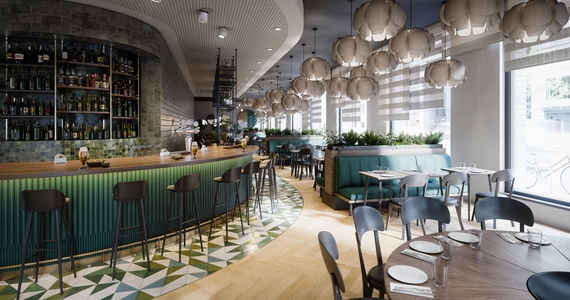Your ultimate guide to family-friendly restaurants Lockhart.
Your ultimate guide to family-friendly restaurants Lockhart.
Blog Article
Why Eating at Local Dining Establishments Sustains Your Community and Thrills Your Palate
Eating at regional restaurants supplies more than simply a meal; it offers as an important component in nurturing neighborhood vitality and economic resilience. What might this indicate for the future of regional dining and area link?
Economic Effect of Regional Dining

The financial influence of local dining expands far beyond the restaurant itself, affecting a wide array of markets within the area. Regional dining establishments play an essential role in stimulating economic development by developing jobs, sustaining regional suppliers, and adding to community earnings. When consumers choose to dine at neighborhood facilities, they help sustain work for cooks, servers, and upkeep staff, thus improving the neighborhood work market.
Moreover, neighborhood dining establishments commonly resource active ingredients from neighboring ranches and manufacturers, fostering a robust supply chain that profits different farming markets. This method not only sustains local economic climates but additionally encourages lasting farming techniques. Furthermore, the sales tax obligation created from these dining establishments adds to necessary civil services, such as education and framework, which additionally enhances area high quality of life.
Furthermore, neighborhood dining facilities typically foster a feeling of community, bring in locals and site visitors alike, which can result in raised foot web traffic in surrounding services. This interconnectivity among regional enterprises improves financial resilience, developing a dynamic and lasting community environment. Basically, the support of neighborhood dining is an investment in the broader economic wellness of the location, advertising development and sustainability for future generations.
Special Culinary Experiences

In addition, numerous regional facilities embrace farm-to-table methods, emphasizing the value of seasonal fruit and vegetables. Diners can relish the quality of ingredients sourced from close-by ranches, which not just enhances flavor yet also fosters a link to the neighborhood landscape. This commitment to high quality and region sets the stage for unique cooking experiences that are frequently missing in chain dining establishments.
Additionally, regional cooks frequently try out combination cuisine, blending diverse culinary traditions to develop amazing brand-new recipes. Such technology not just tantalizes the taste buds however also encourages daring eating, welcoming customers to expand their culinary horizons. Involving with neighborhood dining establishments enables diners to enjoy dishes that are not practically nourishment, but about the virtuosity and enthusiasm that define the cooking globe, making every dining experience really distinct and delightful.
Fortifying Neighborhood Bonds
Dining at regional restaurants plays a crucial duty in enhancing neighborhood bonds by fostering links among homeowners. These establishments work as crucial meeting place where people can take part in purposeful conversations, share experiences, and produce enduring memories. As clients frequent the very same regional spots, they grow a sense of knowledge and camaraderie, enhancing social ties within the area.
Moreover, local dining establishments commonly reflect the one-of-a-kind cultural material of their neighborhoods, showcasing local practices and culinary heritage. This party of local society not just enhances area identity however additionally encourages citizens to take satisfaction in their surroundings. By joining the local you could try these out dining scene, people add to a shared story that binds them together.
Community occasions organized at restaurants, such as open mic nights, charity events, or food festivals, even more enhance these connections. They give opportunities for cooperation and engagement amongst varied groups, cultivating inclusivity and understanding. As citizens gather to sustain regional companies, they concurrently sustain each other, producing an interconnected network that enhances the area's resilience.
Fundamentally, dining at regional dining establishments is not just concerning food; it is an enhancing experience that strengthens area bonds and cultivates a vibrant, united regional society.
Sustaining Local Farmers and Producers

This method lowers transport costs and emissions, promoting environmental sustainability while likewise improving the flavor and high quality of the meals offered. Seasonal food selections, which highlight neighborhood fruit and vegetables, permit dining establishments to offer unique culinary experiences that show the area's agricultural bounty.
Moreover, supporting local farmers helps preserve conventional farming practices and encourages biodiversity. It empowers small manufacturers, permitting them to grow in an increasingly industrialized food system. read this article As neighborhood dining establishments pick to companion with these farmers, they assist preserve a dynamic agricultural community, guaranteeing that local food systems remain resistant.
In significance, eating at regional restaurants is not merely about taking pleasure in a meal; it is an investment in the regional economic climate and an affirmation of lasting practices. By picking regional, restaurants play an important role in nurturing their communities and sustaining the diligent people who cultivate their food.
Maintaining Neighborhood Culture and Heritage
Rooted in the customs of their areas, regional restaurants offer as essential custodians of cultural heritage. By showcasing local ingredients and standard food preparation methods, these establishments protect the distinct flavors and culinary methods that specify regional identity. Each dish narrates, showing historical impacts and social narratives that have formed the community over generations.
Furthermore, local read more restaurants often champion time-honored dishes gave with households, guaranteeing that unique social practices live. This not only educates customers about the area's heritage yet likewise cultivates a feeling of pride and belonging among homeowners. The atmosphere, décor, and even songs in these facilities commonly echo the regional culture, providing an all natural experience that transcends plain dining.
In addition, regional dining establishments contribute to the preservation of language and languages, as menus and discussions frequently include regional vernacular. By participating in community occasions and celebrations, these restaurants enhance social bonds and promote cultural exchange. In significance, eating at neighborhood dining establishments is not just a culinary experience; it is an opportunity to engage with and support the abundant tapestry of regional society and heritage, guaranteeing its connection for future generations.
Conclusion

Report this page